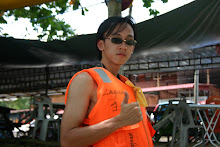By Matt Fitzgerald
There are literally dozens of different variables that are relevant to running performance. Among the more familiar ones are VO2max, lactate threshold speed and running economy (or the rate of oxygen consumption at a given speed—the lower the better). One of the most under-appreciated performance-related running variables is ground contact time, or the amount of time your foot is in contact with the ground on each stride.
Ground contact time always decreases as running pace increases. If you accelerate from 6 miles/hour to 8 miles/per hour in the middle of a run, your ground contact time will decrease as your stride length increases and you spend more time airborne. But not all runners have the same ground contact times at the same speeds, and not all runners are able to reduce their ground contact time to the same level when trying to run fast. The fastest runners tend to have the shortest ground contact times. Training specifically to reduce your ground contact time is an effective way to improve your running.
Some interesting studies have demonstrated the importance of minimal ground contact to running performance. For example, a study by Finnish researchers investigated the relationships between running mechanics, top running speed and economy in young runners. Twenty-five runners performed two separate tests on an indoor track. The first test was 8 x 30m at increasing speeds, up to maximal sprint speed. The second test was 5-6 x 1,000m at increasing speeds. In the first test, ground reaction forces and stride characteristics were measured at each running speed. In the second test, running economy at the speed of 3.89 meters per second and maximal oxygen uptake were determined. The researchers found that, of all the stride characteristics measured in the short sprints, only ground contact correlated significantly with both running economy and maximal running speed. The authors of the study wrote, “It is concluded that the short contact times required in economical and high-speed running suggest that fast force production is important for both economical running and high top running speed in distance runners.”
Why is short ground contact so beneficial to running performance? When your foot is in contact with the ground during running, you are not moving forward. You are only moving forward when airborne. So the more time you spend airborne and the less time you spend on the ground, the faster you run. Ground contact time is determined by three main factors: the ability to apply force to the ground very quickly (that is, power), by the stiffness of the leg at the moment of footstrike (a stiffer leg is able to capture more “free” energy from the ground and then reuse it), and by biomechanical characteristics such as the position of the foot in relation to the center of gravity at footstrike (a foot that lands in front of the body’s center of gravity acts as a brake and thus increases ground contact time).
So how do you train to reduce your ground contact time? Simple: You train to increase your stride power and leg stiffness and improve your biomechanics. The most basic way to add power to your stride is to regularly include some very fast running in your training. Once a week, after completing an easy run, do a set of short sprints—say, 6 x 60m at full speed. To minimize the risk of pulling a hamstring, do these sprints on a steep hill, if possible. Also include regular submaximal running in the 5K-1500m race pace range. At least once every 10 days, complete an interval run with at least 2 total miles of running in this pace range (e.g. 6 x 600m @ 3K race pace with 400m jogging recoveries).
---
Read more --


